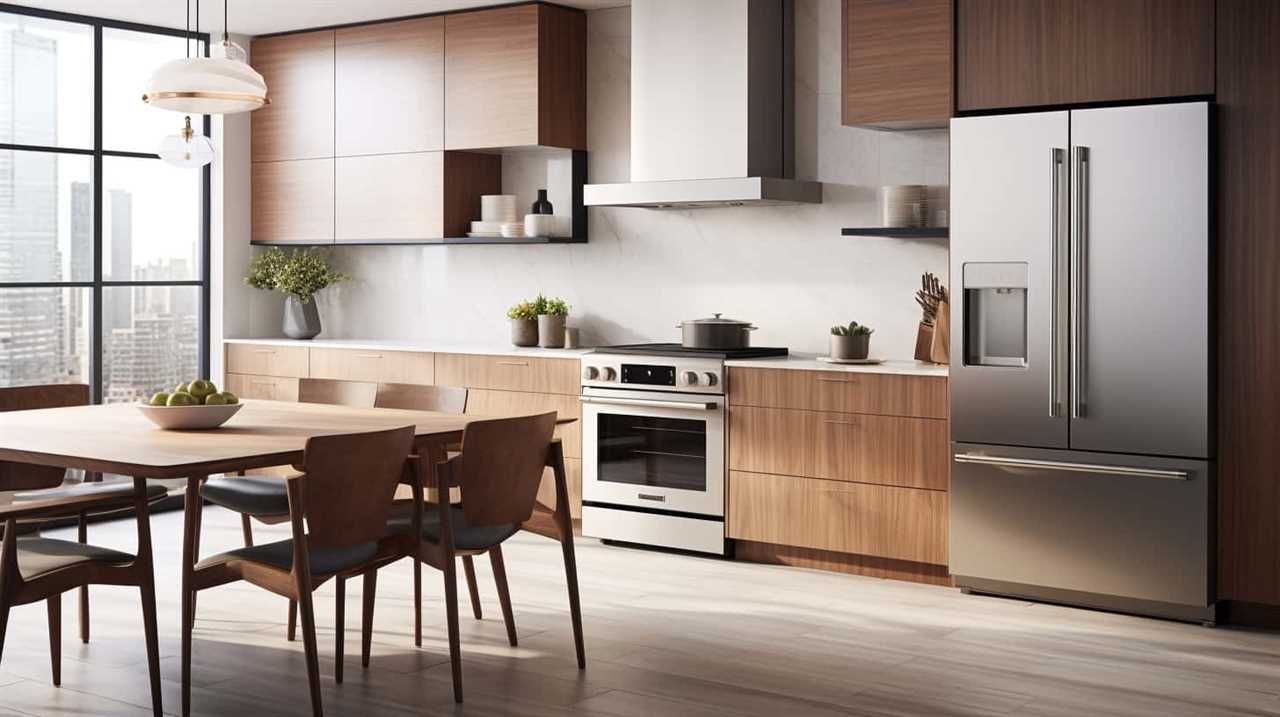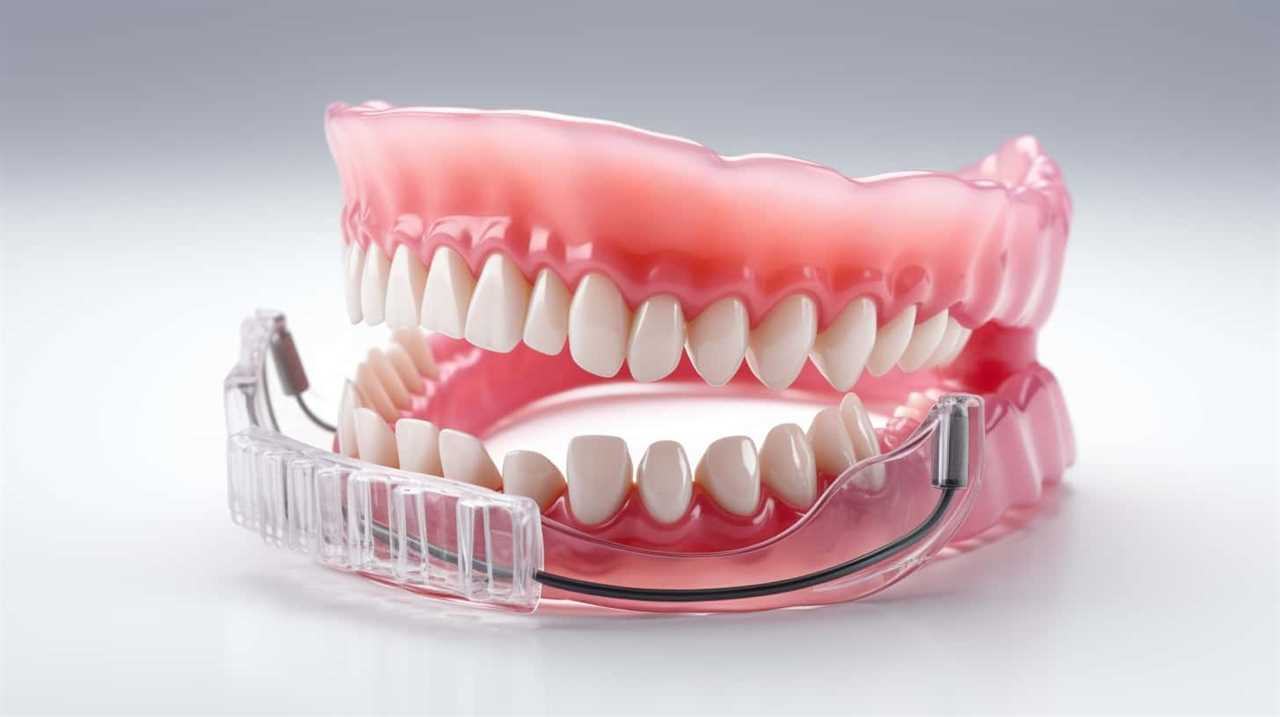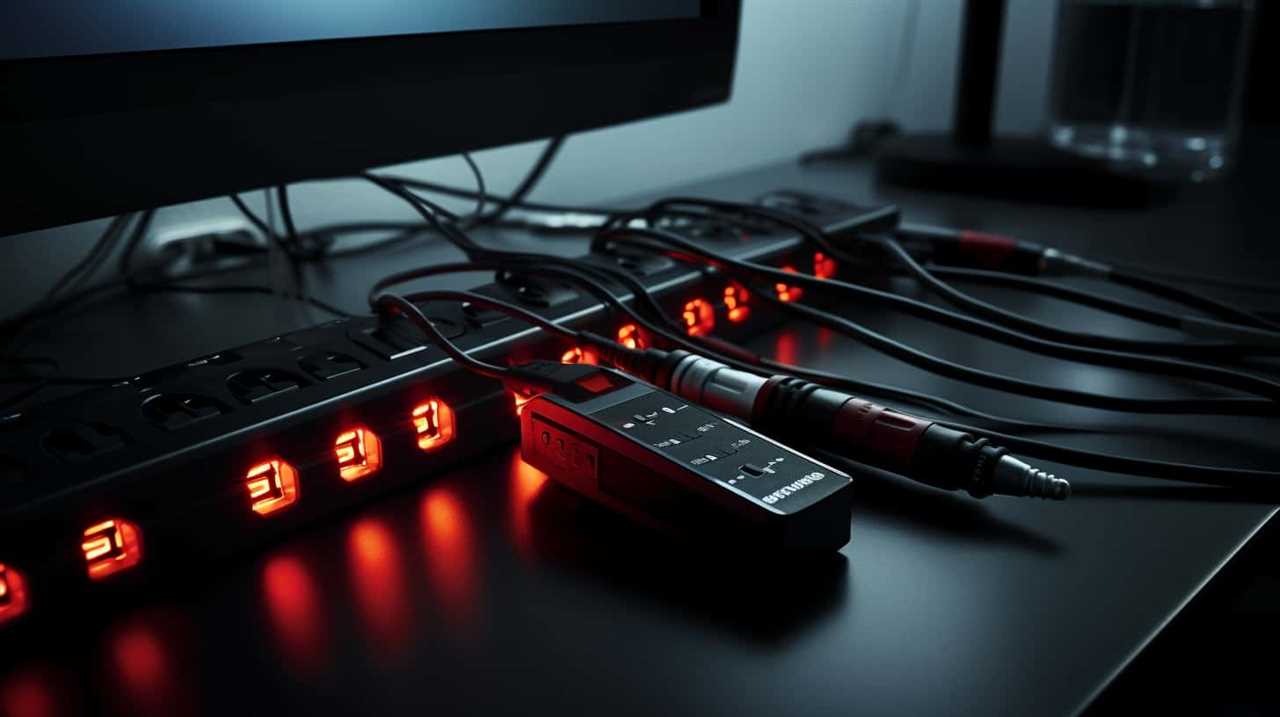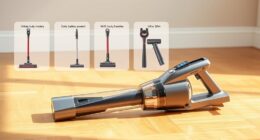Picture a carefully coordinated orchestra of wires, pipes, and tools, all functioning in perfect unison to breathe life into new appliances. This is the core of appliance installation – a detailed procedure that requires accuracy and skill.
In this article, we, your trusted experts, will unravel the intricacies of appliance installation. From the importance of proper electrical connections to plumbing considerations, we’ll guide you through the steps for a smooth and successful installation.
So, tighten your tool belts and join us on this mastery-seeking journey.
Key Takeaways
- Professional appliance installation ensures proper connection and alignment, preventing potential damage or malfunction.
- Proper ventilation and grounding enhance appliance and household safety.
- Preparation is important, including creating a checklist, measuring the space, and checking electrical and plumbing requirements.
- Communication, hiring professionals, following safety measures, and troubleshooting are essential for a successful appliance installation.
Importance of Appliance Installation
Appliance installation plays a crucial role in ensuring the proper functioning and longevity of our household appliances. Professional installation offers numerous benefits that contribute to the overall performance and safety of our appliances.

One of the key advantages of professional installation is the guarantee of proper connection and alignment of the appliance. This ensures efficient operation and prevents any potential damage or malfunction. Professionals also have the expertise to handle complex electrical and plumbing connections, reducing the risk of accidents or electrical hazards.
Moreover, they follow safety precautions during installation, such as ensuring proper ventilation and grounding, which further enhances the safety of the appliance and the household.
Common Types of Appliances
When it comes to appliance installation, we encounter a wide range of common types of appliances that require professional expertise to ensure proper functioning and longevity. Here are some examples of these appliances:
- Built-in Appliances:
- Wall ovens: These appliances are installed directly into the wall, providing a sleek and integrated look to your kitchen.
- Dishwashers: Built-in dishwashers are designed to fit seamlessly into your cabinetry, maximizing space and creating a cohesive kitchen design.
- Energy Efficient Appliances:
- Refrigerators: Energy-efficient refrigerators use advanced technologies to reduce energy consumption while keeping your food fresh.
- Washing machines: Energy-efficient washing machines use less water and electricity, saving you money on utility bills.
Preparing for Appliance Installation
After researching and selecting the right appliances for our home, we can now begin preparing for their installation.

Before scheduling the installation, it’s important to create a pre-installation checklist to ensure a smooth process. This checklist should include measurements of the designated space, ensuring that it meets the appliance’s specifications.
Additionally, it’s crucial to check if there are any electrical or plumbing requirements for the appliances. This will help avoid any unexpected costs or delays during the installation.
Speaking of costs, it’s recommended to consider the appliance installation cost in your budget planning. By being prepared and having a clear understanding of the installation requirements and associated costs, we can move on to the next step: the proper electrical connections.
Steps for Proper Electrical Connections
Now that we’ve completed the necessary preparations, let’s move on to connecting the appliances properly. Proper electrical connections are crucial for both electrical safety and appliance maintenance. Here are the steps to ensure a safe and effective electrical connection:

- Gather the necessary tools and materials:
- Wire strippers
- Wire nuts
- Electrical tape
- Screwdrivers
- Outlet tester
- Turn off the power: Before making any electrical connections, always turn off the power at the circuit breaker or fuse box to prevent electrocution.
- Strip the wires: Use wire strippers to remove the insulation from the ends of the wires, ensuring that an appropriate length of bare wire is exposed.
- Connect the wires: Use wire nuts to securely connect the wires, ensuring that the corresponding colors are matched.
- Secure the connection: Wrap electrical tape around the wire nuts to provide additional insulation and prevent accidental disconnection.
- Test the outlet: After making the connections, use an outlet tester to verify that the outlet is properly wired and grounded.
Plumbing Considerations for Appliance Installation
Let’s address the plumbing considerations for appliance installation.
When installing appliances that require water supply and drainage systems, it’s crucial to ensure proper connections to avoid leaks, water damage, and inefficiencies.
Firstly, it’s essential to assess the existing water supply and drainage systems to determine if they can accommodate the new appliances. This may involve evaluating water pressure, pipe sizes, and the capacity of the drainage system. If necessary, modifications such as installing additional pipes or upgrading the water supply may be required.
Secondly, it’s important to ensure that the appliances are installed in close proximity to the water supply and drainage system for easy access and minimal plumbing work.

By carefully considering these plumbing aspects, you can ensure a smooth appliance installation process.
Now, let’s move on to the next section to learn some tips for a seamless installation experience.
Tips for a Smooth Appliance Installation Process
To ensure a smooth appliance installation process, we frequently communicate with our customers to address any concerns and provide clear instructions. This helps to minimize any potential issues and ensure a successful installation.
Here are some tips to help you have a hassle-free appliance installation:

- Preparation:
- Measure the space: Before purchasing an appliance, measure the available space to ensure it fits properly.
- Clear the area: Remove any obstacles and ensure there’s enough space for the installation team to work.
- Hiring professionals:
- Consider appliance installation services: Hiring professionals can save you time and ensure the job is done correctly.
- Compare appliance installation cost: Get quotes from different companies to find the best price for the services you need.
Frequently Asked Questions
What Are the Potential Risks of Not Properly Installing Appliances?
Not properly installing appliances can lead to various risks and consequences. These include electrical hazards, gas leaks, water damage, inefficient performance, and potential damage to the appliance itself. It is important to ensure proper installation to avoid these issues.
Are There Any Special Considerations for Installing Appliances in Older Homes?
When retrofitting appliances in older homes, safety precautions must be taken. It’s important to assess electrical systems, ensure proper ventilation, and consider load capacities. Remember, "measure twice, install once" to avoid costly mistakes.
Can I Install Appliances Myself or Do I Need to Hire a Professional?
We can install appliances ourselves, but hiring a professional has advantages. They have expertise, ensure proper installation, and handle any complexities. DIY appliance installation requires technical knowledge, tools, and potential risks.
What Are Some Common Mistakes to Avoid During Appliance Installation?
Common challenges in appliance installation include improper electrical connections, inadequate ventilation, and lack of level installation. To avoid these mistakes, it is best to follow manufacturer guidelines, use proper tools, and ensure proper safety measures are in place.

How Long Does the Appliance Installation Process Typically Take?
On average, appliance installation takes a few hours. Factors like the complexity of the appliance, the need for additional wiring or plumbing, and the skill level of the installer can affect the time required.
Conclusion
In conclusion, appliance installation is a crucial process that requires careful consideration and attention to detail. Like a well-orchestrated symphony, each step must be executed smoothly to ensure the proper functioning of the appliance.
Just as a conductor guides the musicians to create harmonious melodies, a skilled technician guides the installation process to achieve a seamless integration of the appliance into its designated space.
By following the outlined steps and considering the necessary factors, a successful appliance installation can be achieved.











